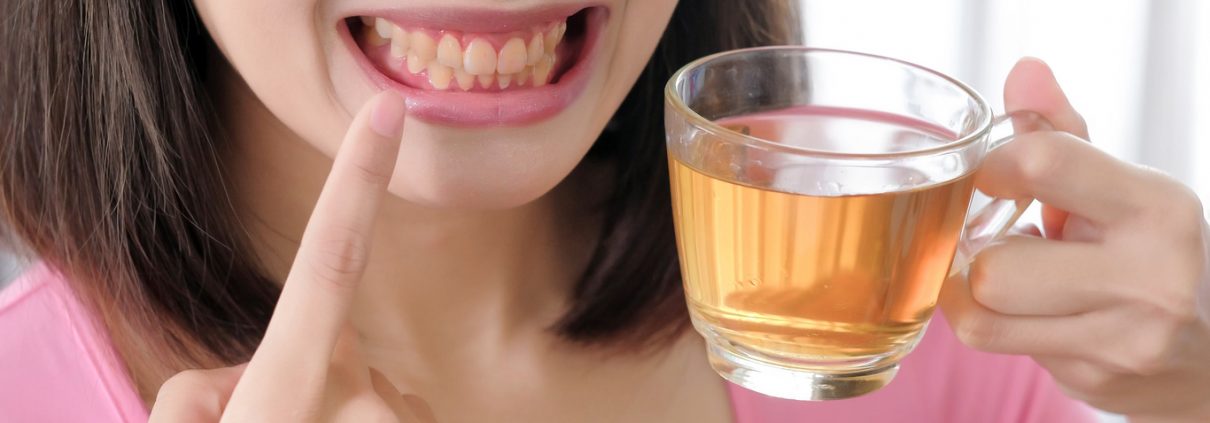The Many Causes of Tooth Discoloration
Teeth change color over time due to various factors and spots appear on their surface. But discoloration and stains on the surface of the tooth are different, and this makes their treatment methods also different.
In general, in terms of depth of discoloration, three types of tooth stains are superficial stains, deep stains and aging stains.
Surface stains: These stains are created in the outer layer of the tooth, which is called enamel. Stains and discoloration from foods such as coffee and tea, soft drinks and other substances are of this type. Cigarettes can also cause surface stains.
Deep spots: These spots are created in the internal structure of the tooth (dentin layer). Ivory has a darker color. In the following cases, deep spots appear in the dentin layer:
They are exposed to a lot of fluoride during childhood when their teeth are growing
Your mother took the antibiotic tetracycline during pregnancy, especially in the second half of pregnancy
In childhood, a growing permanent tooth is damaged by injuries such as a fall or accident
Permanent tooth is injured and has internal bleeding that has changed its color (red, brown or black tooth)
You may be born with a rare medical condition called dentin genesis imperfecta, which causes teeth to turn gray or purple.
Aging spots: This color change includes any type of surface and depth. The dentin layer turns yellow with age. On the other hand, the enamel that covers the surface of the tooth becomes thinner over time and shows more dentin color. On the other hand, eating high-pigmented foods and smoking also make teeth yellower. Eventually, injuries such as lip filling and cracking can cause tooth discoloration.
As mentioned, the factors that cause discoloration and stains on teeth are not always limited to colored drinks and foods. Some people experience tooth discoloration as a result of taking drugs, fluoride, cigarettes and other tobacco products, aging or injuries. The method of teeth whitening varies depending on the severity of the tooth discoloration and its type. That’s why it’s important to identify the cause of the discoloration.
If one of your teeth is darker than the other, it is often due to dental injuries or certain medications. If the cause of a particular tooth is dull, injury and trauma can occur in two cases. Iron in the blood may have entered the dentin structure of the tooth and saturated it, resulting in deep spots inside the tooth. Another condition is that the injury has caused the tooth structure to become out of shape, resulting in more spots accumulating in some areas of the tooth.
Sometimes when you look closely at your teeth in the mirror you will notice white spots on the surface of the tooth and sometimes you may see only a white spot on the surface of the tooth. White spots on the surface of the teeth are usually the first signs of tooth decay and possibly perforation in the future. Do not worry because it is not too late for treatment. You should have regular check-ups every six months and scaling in a timely manner to prevent tooth decay. White spots on the surface of the tooth indicate that the process of decalcification (meaning the removal of calcium from the tooth structure) is taking place. Calcium depletion usually occurs due to poor diet and lack of saliva flow in the mouth and is irreversible. However, this condition can be managed by drinking plenty of water and many times, as well as using fluoride-containing products to mineralize teeth.
Discoloration after teeth whitening
In fact, this problem does not mean discoloration of the teeth. When you go to the dentist to whiten your teeth, you should know that dental restorations such as veneers or laminates, or veneers, fillings and implants do not whiten with this treatment and do not change color. The surface of dental restorations is completely smooth, like glass, and unlike teeth, there is no porosity. Due to the smooth and polished surface of the restoration and the absence of porosity, the pigment materials cannot enter its structure and change its color. When you want to whiten your teeth, dental restorations do not have pigment and stains that become whiter when you lose them. Therefore, after bleaching, your natural teeth turn white, but the restorations do not change color, which is why there is a color difference between natural teeth and dental restorations. As a result, you think the restorations have changed color. That is why it is always recommended that if you want to whiten your teeth, do this before tooth restoration so that the restoration color is chosen according to your whitened teeth.

